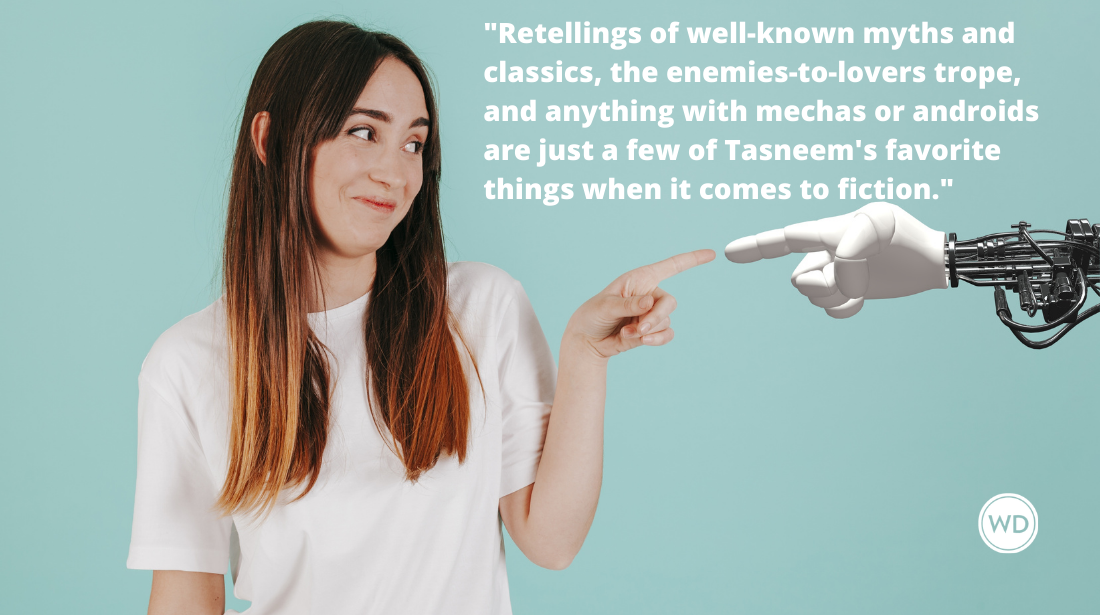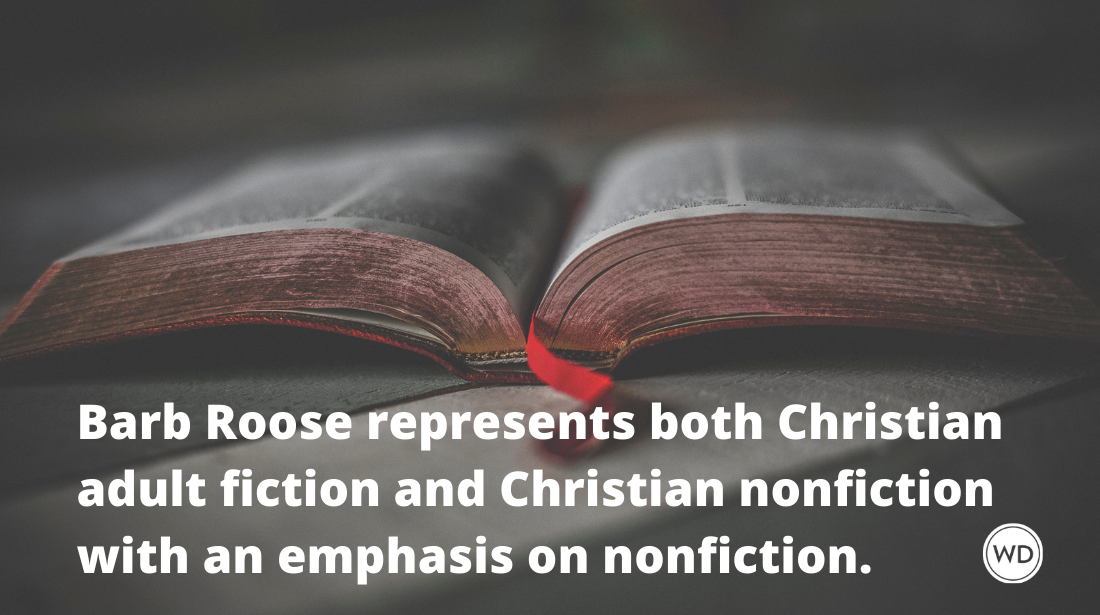Agent Advice: Bernadette Baker of Vigliano & Associates
The best way to get advice from literary agents is to go directly to the source. In this post, get agent advice from Bernadette Baker of Vigliano & Associates.
In mid-2010, Bernadette left Baker's Mark
and joined Vigliano & Associates.-----------
“Agent Advice” (this installment featuring agent Bernadette Baker, now of Vigliano Associateas) is a series of quick interviews with literary agents and script agents who talk with Guide to Literary Agents about their thoughts on writing, publishing, and just about anything else. This series has more than 170 interviews so far with reps from great literary agencies. This collection of interviews is a great place to start if you are just starting your research on literary agents.
This installment features Bernadette Baker of Vigliano Associates. Bernadette deals in many subjects, but her passion and specialty is for graphic novels and comics.
GLA: Tell us a little about yourself. How did you come to be an agent?
BB: In 2005, I was finishing up my master’s degree and working as the marketing director for Beyond Words Publishing, now an imprint of Simon & Schuster. I had been accepted to law school in Chicago and had every intention of leaving Portland for Chicago in the fall, but three things happened in early 2005 that directly resulted in the development of Baker’s Mark.
The first thing that happened was that I met Gabriel Boehmer, the author of City of Readers: A Booklovers Guide to Portland, Oregon. Gabe had simply one of the best proposals I have seen to date, and so I arranged a meeting between him and the publishers of the (then) new publishing house Tall Grass Press. Because of my experience in publishing, Gabe asked me to help him in negotiations and management. This ended up being my first book deal. Simultaneously, I had been approached by an investor who was interested in growing an agency with me. And finally, Janet Hill of Doubleday’s Harlem Moon imprint introduced me to my long-time colleague and mentor Victoria Sanders. These three things really happened in a matter of about 90 days, which was a huge indicator that something was going on, pointing me to launch Baker’s Mark.
A couple of months after I had established Baker’s Mark, I met my business partner, Gretchen Stelter. She showed an incredible amount of enthusiasm for publishing, is a voracious reader, and very intelligent. It was clear that she and I really had a lot to offer one another in business. She also possessed a number of strengths that I did not have. My background is in Marketing and Sales, while Gretchen’s background is in editing and journalism. Our varied expertise really became an asset to our company. We are just approaching our three-year mark.
GLA: What's the most recent thing you've sold?
BB: Our agency sold two books immediately after the New York Comic Con in April. Oddly enough, neither were comics! The first book, however, does have its roots in the comic book world because it is written by veteran comic book creators Paul Guinan and Anina Bennett. World English and first serial rights for Boilerplate: History's Mechanical Marvel, the definitive history of the world's first robot soldier, were sold to David Cashion at Abrams Image.
The second book that we sold after NYCC is our first fiction sale as an agency, and it is a debut fiction for the author, 18-year-old Dan Elconin. Neverland is a modern and gritty retelling of the story of Peter Pan, where Peter is the antagonist. The retelling captures all of the original elements of the classic with very dark, witty storytelling that will change how everyone thinks of Peter Pan. Look out for this book in hard cover in Fall 2009.
GLA: You specialize in graphic novels - something the blog has not touched on much. When a writer queries you and submits something, does the writer compose both the text and the illustrations, or just the text?
BB: Every book is different. We do represent single creator books, but not all comic book writers can draw, and not all illustrators can (or want to) write, so submissions for graphics come in many styles and formats. Short of a completed work, we typically request a full script and/or a fully developed synopsis, 15 pages of representative artwork, a full bio for the author/illustrator, and other materials that may be helpful in our decision making process, such as thumbnails.
Typically (and there are exceptions to this rule), when it is a separate artist and writer, we are looking for projects where a team is already established. We represent the amazing team of Jamie S. Rich and Joëlle Jones. While Jamie also writes prose, and while they both do work for hire, they came to us after their wildly successful 12 Reasons Why I Love Her with more ideas for collaboration. Another great example is Jesse Post and Ted Slampyak, who teamed up specifically for a brilliant book called Small Plans (deal news to come). Post and Slampyak shared a vision for the work and were able to team up in a way that makes a lot of sense for the full realization of the graphic novel.
Then again, we also did two book deals in a co-agenting arrangement with Victoria Sanders, for writers Susan Kim and Laurence Klavan. Their scripts are brilliant, they both have an amazing platform, and we were able to place these books with no art attached at all.
All that said, the answer to this question also depends on the types of publishers we will be approaching with the work. But generally speaking, it is a long shot that we would acquire something without art attached.
GLA: What makes a subject matter or plot "worthy" of a graphic novel format?
BB: I think all subjects are worthy of the graphic format, but the success of a comic is all in the execution. The story, or the subject matter, should be served by the marriage of illustration and writing. It is a huge letdown to read a comic and feel no influence from the illustration. On the other end of that, a well executed comic can provide some of the most poignant, satisfying reading I have ever experienced. For each comic, there must be a reason to tell the story in sequential art style, an advantage that you gain only by telling the story in comic format. It is really clear when a creator has conscientiously used the art and writing together to convey the story.
When I first started really reading graphics, I remember being surprised at the broad range of material that was being published. I first met Scott Allie, an editor at Dark Horse comics, shortly after Gretchen and I decided to represent comics. I remember that he scolded us for referring to graphic novels as a genre—“Comics can be written in any genre, you see”—which was really an eye opener for me. While I immediately fell in love with “classic” memoirs like Maus, Blankets, and Persepolis, there were also things like Capote in Kansas and Deogratias (though that came a little later) which were completely unexpected. Now, more and more, I look for comics that are trying new things with genres of all types.
GLA: You say you're looking for comics "with an indie bent or that will appeal to women." Can you give a few examples?
BB: These are really two different things, so I will talk on both. When I talk about comics that appeal to women, I am really talking about myself. I know it is selfish, right? But I am a woman reader. And I love reading comics. There is something about the format that works so well for me. And I could put this same statement out there when it comes to prose, except there is a lot more material geared toward women readers in the prose world than in the comic book world. When I say that I want to rep more comics that appeal to women, I primarily mean that I want more comics with female lead characters (especially for the YA market), but I also want to rep books that are character and emotion driven. I want to represent comic literature. I want something that I could give my sister, who probably has never even cracked a comic book page, and she could really fall in love with. It is a hard sensibility to describe because I couldn’t really see myself representing Lara Croft books, even though she is a kick-ass female lead. I guess I want things that experiment more with the format as new literature and that quite frankly keep me interested as a woman reader.
When I talk about an idie style of art, I am talking about an organic feel that generally results from having only a single artist or a couple of artists illustrating a book. I typically don’t really like art that is overly digitized, even though it can be really clean and in some cases quite beautiful. I enjoy comic art that has the clear identity of the creator behind it. For instance, when I look at my client Farel Dalrymple’s art, he has a very distinct style.
GLA: Let's say you're talking to someone who has very little knowledge about starting as a comic writer. What are three invaluable tips you can give them as they start out?
BB: Usually, when asked this question, I tell people to begin reading comics voraciously. I would also definitely recommend Scott McCloud’s books on creating and understanding comics and Douglas Wolk’s new book Reading Comics. And later this year, I will recommend Chris Ryall and Scott Tiption’s forthcoming book from F+W Tow Books, Comic Books 101 (that is right, Chuck, I am plugging you and my clients, all in one sentence).
Then, read more comics. Learn what you like, what you don’t like. Read books that are similar to the ones you want to write and study them. What is working and what is not? Figure out which art styles appeal to you most; even if you never ever have to work directly with an artist (unlikely), you will be giving the artists direction in your script. You must develop your understanding of sequential storytelling. Some of the Slave Labor books have sample scripts in the back of the book. Take a look at what the scripts look like. I also think comic book conventions are a great way to network with other creators, fans, and publishers, and there are a lot of hidden opportunities there. Comic book conventions take place nationwide, so try and find the one closest to your region to start.
GLA: What upcoming conferences will you be at where writers can pitch you?
BB: Gretchen Stelter and I will both be attending the Writer's Digest Books Writers' Conference and BookExpo America, as well asthe San Diego Comic Book Convention. We also attend the New York Comic Book Convention, Stumptown Comic Book Festival, and Emerald City Comic Con. Our hope is to make it to the shows abroad in the near future.
The comics that most interest Bernadette Baker right now are historical stories, biographies, fables, mythology, memoir, and urban fantasy. But she is also a great fiction lover, and would really like to see more psychological thrillers in the comic format; I don’t think that area has been explored enough. And more, more, more books with females as the main character. See her agency website here. Submission information is available online.
Chuck Sambuchino is a former editor with the Writer's Digest writing community and author of several books, including How to Survive a Garden Gnome Attack and Create Your Writer Platform.







